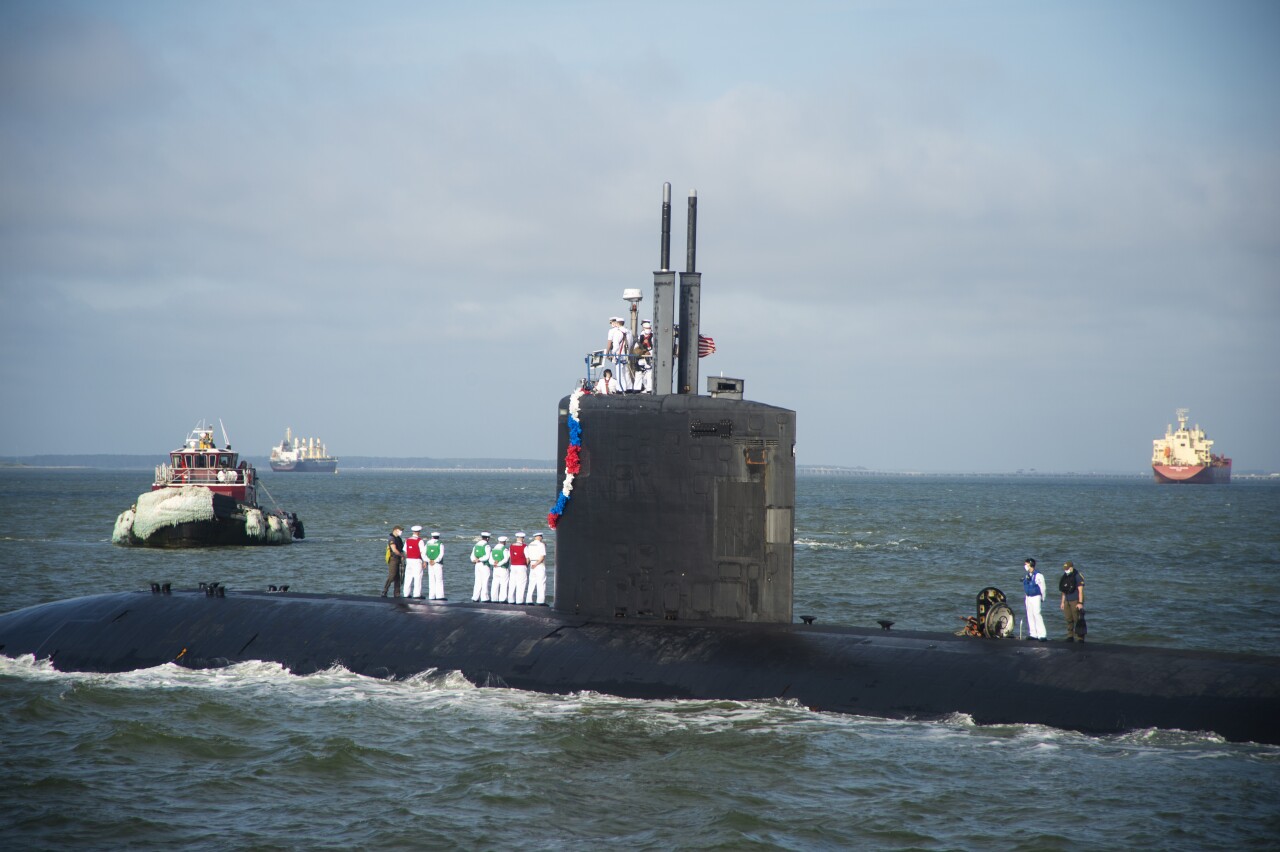TMJ4 was given exclusive and rare access to the world's largest naval base, Naval Station Norfolk, in Virginia. It was part of the Navy's 'Sailor for a Day' program. As part of the program, TMJ4 spoke to sailors from Racine, Milwaukee, and De Pere about life aboard their respective ships. TMJ4's James Groh toured Navy ships, saw their sleeping quarters, rode in a helicopter, and learned what life is like as a young sailor in the Navy. Click on the following links to learn about life on a destroyer, aircraft carrier, and dock landing ship.
Outside of rocket ships, submarines are some of the most complicated vehicles in the world. One Racine sailor is in charge of arguably the most technical part of the submarine, the nuclear reactor.
"If I’m being honest, I wanted to be in IT, and I’m just too smart, and they gave me the only option of this," ETN_1 Anthony Hawkins from Racine said.
He's not the sole person in charge of the reactor, but he has a high-up position responsible for the maintenance and all other matters relating to the reactor. For those unfamiliar with nuclear reactors, it may come as a surprise to learn just how little radiation these technicians experience while on board.
“When we're underway for a week we will receive less radiation than you will going to the beach for three hours," Hawkins said.

Hawkins began his engineering career at MSOE. While there and after graduating he was working at Subway to make ends meet. He was also engaged to his now wife, and wanted a more fulfilling career, but no one was hiring. He saw the military as a promising option.
"I entered the Navy the day after the Packers won the Super Bowl last."
He is happy with his time traveling the world under the seas and plans on doing 20 years of service before retiring. He said the food is generally good but wouldn’t mind a few more treats from home.
“Kringle from Wisconsin, definitely - would love to have more of that.”
Attack submarines like the USS Albany can dive 400 feet below water and are designed to take down other subs and ships.
While I got the chance to tour the submarine, they did not allow anyone to film inside. They said that there was too much sensitive information on board that the Navy did not want to be leaked. Frankly, I couldn't explain anything I saw on the vessel; however, the people who want intelligence on U.S. submarines would understand it. Some of the things they wanted to hide were the upper and lower capacities of the ship's performance. For example, when asked how long it took to reload a torpedo, officers declined to answer.
Nuclear submarines have a lot of firepower. The USS Albany is an attack sub that can dive 400 feet below the water. It's designed to take down other submarines and ships. While we don't often hear about submarine battles, the Navy mentioned that their vessels act as a deterrence.
While I couldn't film below deck, I could talk to sailors on board. They told us that their favorite meal is 'hamster'. That's their nickname for chicken cordon bleu. Plus, while it seems obvious, we saw just how tightly packed the sailors are put together. There isn't much space. In fact, there aren't even enough beds for everyone on board. They implement a practice called 'hot racking'. Three sailors share a bunk. One is sleeping, one is on break, and one is working. Everyone operates in eight-hour intervals.
Interestingly enough, one of the most common accidents on the submarine is dryer fires. Since the dryer is being used around the clock, it often overheats and causes a small fire. Just imagine dozens of 18-20-year-olds doing their laundry back-to-back-to-back. You can imagine how often it would happen. That's why many sailors have to go through fire safety training and learn how to put out a fire while hundreds of feet underwater.
Life on a submarine is not easy. Being away from friends, and family, and under the sea for long lengths can be taxing. That's why the Navy is offering new financial incentive programs to recruit more people.
According to Navy.com: "For a limited time, active duty Future Sailors who leave for boot camp before March can earn up to $115K. Reserve duty Future Sailors who leave for boot camp before March may qualify for bonuses up to $25K."



